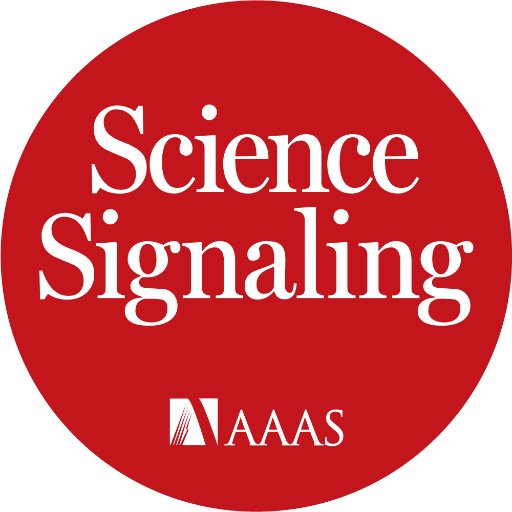
Science Signaling
@scisignal
Followers
19K
Following
762
Media
4K
Statuses
5K
Uncovering mechanisms in biology, gaining insights into physiology and disease.
Washington, DC
Joined April 2010
The new issue of #ScienceSignaling has arrived! . A new study reveals how small proteins in E. coli enable bacteria to cope with stress, our latest Editors’ Choice piece dives into findings showing how estrogen protects against kidney injury, and more.
0
4
36
What are the roots of opioid-induced #hyperalgesia and tolerance? New work in rodents shows G-alpha-q contributes to pain sensitivity and tolerance from morphine by coupling with mGluR5 and enhancing NMDAR trafficking in neuronal synapses. @MDAndersonNews
0
0
2
Don’t miss this week’s issue of #ScienceSignaling! . A new study interrogates the molecular roots of the “opioid paradox,” researchers reveal how melanoma and other cancer cells use a cell cycle protein to evade therapies, and more.
1
9
50
What are the roles of small proteins in #Ecoli?. Using ribosome profiling, a team studies small proteins induced by magnesium starvation and show that one named YoaI activates a two-component system linked to osmotic stress response. @ScarletSam
0
0
2
New work may answer why some patients with triple-negative breast cancer who receive beta-blockers have a lower risk of #metastasis and identifies a factor that holds promise as a prognostic and therapeutic target. @MIPS_Australia @Dr_MLHalls @TerranceLamm
0
1
10
New findings reveal how subunits of the amylin receptor interact with each other—a discovery that may have implications for the development of drugs to treat diabetes and obesity. @OUHealth
0
0
1
In this week’s Editors’ Choice piece, we highlight a study by Tonnus and colleagues in @Nature, showing the mechanisms by which estrogen protects against kidney injury. Learn more:
0
0
1
New work this week expands scientific knowledge of the small proteins that coordinate stress responses in bacteria, such as #Ecoli, and suggests that cellular stress networks are more interconnected than was previously thought. @ScarletSam @Waksman_Inst
0
1
4
What are the roles of small proteins in #Ecoli?. Using ribosome profiling, a team studies small proteins induced by magnesium starvation and show that one named YoaI activates a two-component system linked to osmotic stress response. @ScarletSam
0
1
3
New work may answer why some patients with triple-negative breast cancer who receive beta-blockers have a lower risk of #metastasis and identifies a factor that holds promise as a prognostic and therapeutic target. @MIPS_Australia @Dr_MLHalls @TerranceLamm
0
1
4
New findings reveal how subunits of the amylin receptor interact with each other—a discovery that may have implications for the development of drugs to treat diabetes and obesity. @OUHealth
0
0
1
A new study identifies enzymes that may drive a drug-resistant state in #PancreaticCancer and decrypts tumor heterogeneity at the single-cell level, suggesting that drugs called ERK inhibitors could minimize resistance to chemotherapy. @LazzaraLab @UVA
0
1
9
Scientists have identified how a #lncRNA named EPIC1 endows tumors with the ability to resist immunotherapies—and show that targeting EPIC1 in cells and mice can potentiate checkpoint blockade and slow tumor growth. @UPMCHillmanCC
0
4
19
Analyzing #TNBC cells, a team finds the transcription factor Hox-C12 supports metastasis by connecting beta2-ARs to a calcium-cAMP loop and show that HOXC12 expression correlates with worse survival in patients. @MIPS_Australia @Dr_MLHalls @TerranceLamm
0
1
5
A new study reveals a signaling loop that drives metastasis in triple-negative breast cancer, discoveries about amylin receptor subunits could inform future drug design, and more this week in #ScienceSignaling.
1
16
63
A new study identifies enzymes that may drive a drug-resistant state in #PancreaticCancer and decrypts tumor heterogeneity at the single-cell level, suggesting that drugs called ERK inhibitors could minimize resistance to chemotherapy. @LazzaraLab @UVA
0
0
3
Scientists have identified how a #lncRNA named EPIC1 endows tumors with the ability to resist immunotherapies—and show that targeting EPIC1 in cells and mice can potentiate checkpoint blockade and slow tumor growth. @UPMCHillmanCC
0
0
3
The approved drug #asciminib may be more effective against leukemias driven by the fusion protein BCR-ABL than it is against those driven by TEL-ABL, show new in vitro findings that may have implications for the drug’s clinical use. @VUBasicSciences
0
2
5
Small extracellular vesicles released by tumors recruit nociceptor sensory neurons that contribute to an immunosuppressive tumor environment in mouse models of #HeadAndNeckCancer, according to new work. @SanfordResearch
0
0
2




















